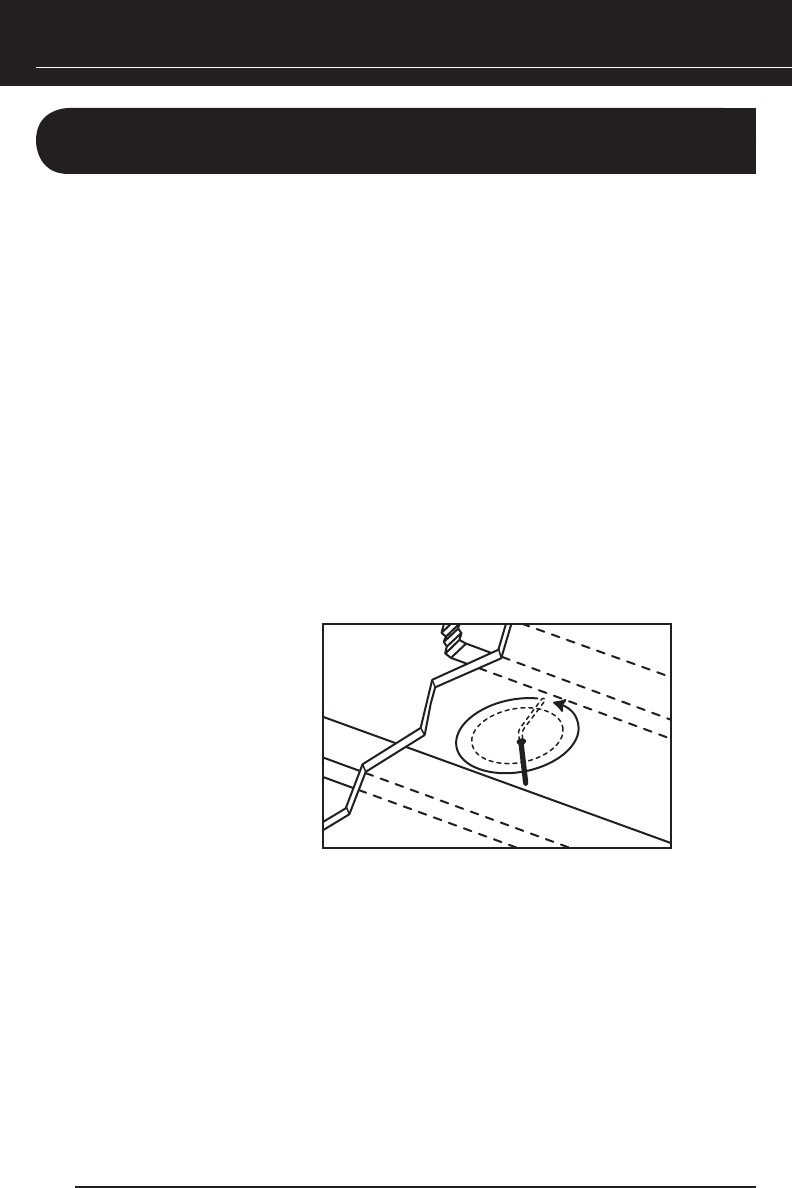
EXISTING CONSTRUCTION:
INSTALLATION OF BRACKETS, FRAMES, AND GRILLES
PLANNING THE INSTALLATION
IMPORTANT: BEFORE YOU CUT INTO ANY WALL, REVIEW THE SECTIONS SPEAKER PLACMENT
ON PAGE 6 AND RUNNING THE SPEAKER WIRE IN NEW CONSTRUCTION ON PAGE 10. BE SURE
NOT TO DRILL OR CUT THROUGH EXISTING WIRES, PIPES, OR STRUCTURE. IF YOU FEEL ANY
EXTRA RESISTANCE AS YOU ARE DRILLING OR SAWING, STOP!
1. Locate joists by using a stud sensor or by hand knocking. Keep in mind that the
mounting “dogs” will extend 3/4 inch beyond the cutout. Make sure you do not place
the edge of the cutout directly next to a ceiling joist.
2.
At the planned cutout site, drill a 1/8-inch pilot hole just barely through the ceiling,
about an inch below the center of your proposed speaker location.
NOTE: IN MOST HOMES, THE CEILING THICKNESS IS 1/2 TO 5/8 INCH.
3. Cut a foot-long piece of coat hanger and bend it to create a right angle, leaving
3/4 inch to allow for the extra width of the mounting dogs. Poke the “L-shaped” wire
into the pilot hole and turn it in a complete circle, as shown in Figure 16
.
4.
Continue turning the coat hanger as you move it into the ceiling cavity to a depth of
approximately 6 inches. If you feel an obstruction, fill the hole(s) with spackling com
-
pound and repeat steps 1 through 4 at a new location.
5.
If the coat hanger moves freely in a complete circle, hold the supplied template up to
the ceiling surface. Use a pencil to outline the circular cutout on the ceiling surface.
Then drill a starting point with a 1/4-inch bit.
6.
If you are cutting drywall, use a sheetrock or keyhole saw. Cut the hole with the saw at
a 45-degree angle. That way, the drywall section can be replaced cleanly if there is an
unseen obstruction behind the wall.
Figure 16. Using a
coat hanger to check
for obstructions behind
the ceiling speaker site.
16


















